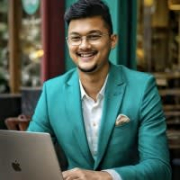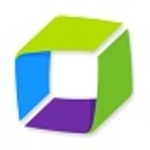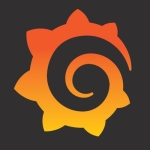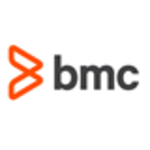We have been using Splunk ITSI to detect anomalies in the services and monitor the health and overall performance of IT services.
We have implemented it for a few of our clients where we do monitor the entire IT infrastructure. It could be any server that they are running. It could be a mail server. It could be a web server. It could be any network device that is communicating. We monitor the health of these services and how they are performing. We check for any anomalies or threats associated with them. We create some kind of KPIs or key performance indicators that give insights into the health and services.
We are a Splunk partner. Our company provides solutions not just related to Splunk ITSI but for all the things covered by Splunk. We also provide our consultancy for all of their premium products such as SOAR and Enterprise Security.
Splunk ITSI has a service-oriented approach to monitor the entire IT infrastructure. From a business perspective, people definitely do not want any downtime. Any downtime leads to a bad reputation for a company. Splunk ITSI is a solution that we can use to monitor every single service running within an organization. With the help of KPIs, we define the service needs. A person implementing ITSI needs to be aware of all of the services running so that they do not miss out on anything. With the predictive analysis of Splunk ITSI, we can monitor everything. If there is any anomaly, an alert gets triggered. The other thing is the integration part. We can integrate it with any of the ticketing platforms such as ServiceNow. As soon as the alerts get triggered, a ticket gets created so that a response can be made to a particular incident.
It is very integrable. It can be integrated with any network component, such as a router, or any of the logs. With the help of Glass Table, it becomes very easy to inspect if any of the services are down. If a person is trying DDoS on any of the IT servers, such as a web server, we will see a lot of packets getting injected. There will definitely be an increase in the number of packets that a server is receiving. With the help of Splunk ITSI, we can block that particular IP, so the actions can be taken at the same time.
With the help of machine learning and predictive analysis, it checks for any anomaly. It monitors the normal behavior of a service, and if there is an anomaly, it can definitely create an alert for the user. This is how Splunk ITSI works.
Splunk ITSI can integrate with various management tools for predictive analysis. It takes the data and tries to predict and see if anything is suspicious. It makes its own decision at that time, and based on the actions that are listed, it takes action on a particular incident.
Using Splunk ITSI in an IT environment is very helpful. It reduces the downtime and the time taken for a resolution. It can take certain actions on its own. We can monitor every service there. Splunk ITSI can be helpful to prevent something from going down and the users having to face any downtime, failures, or issues with the servers. There is a proactive approach where things can be fixed before they turn into a breach.
Nowadays, it has become very easy for attackers to perform any kind of attack on the servers. Every organization wants its servers to be up and running. So, there is definitely a lot of demand to monitor the entire IT infrastructure. Splunk ITSI is good for that. It plays a key role in the current era where organizations face a lot of attacks. It is a ten out of ten when it comes to being useful to fix all such issues.
Splunk ITSI completely integrates with the incident management platforms. For specific alerts or notable events, Splunk ITSI can also take action with the help of playbooks and defined workflows. With integrated incident management, we can take more advanced actions and make decisions for the environment.
Splunk ITSI helps reduce incident volume. It is business-centric and service-oriented. It provides visibility and is great for predictive analytics and incident management. It also reduces downtime and gives a clear picture of services from a business perspective. I do not have the metrics, but it reduced the incidents to a large volume.
Splunk ITSI reduces the mean time to detect through machine learning and predictive analytics. It observes the normal behavior of a service. If there is any anomaly, it triggers an alert based on the KPIs that are defined. If there is any suspicious behavior, Splunk ITSI can identify that.
We can define certain actions through playbooks for an alert. It can be integrated with SOAR. It can take certain actions as soon as an alert gets triggered. In the case of a DDoS attack, if an IP is sending a lot of packets, we want to block that particular IP to our firewalls. We can define this action within our playbooks, and Splunk ITSI will be able to sort that out in a quick manner.
We can integrate it with a SOAR to automate the workflows and take certain actions. Playbooks are useful for that. I do not have the data about time savings, but it saves a lot of time. Without it, a human will have to open the ticket and go through the incident before taking action, whereas Splunk ITSI can take certain actions on its own, saving a lot of time.
Splunk ITSI has saved money from the overall business perspective. No business wants to see downtime or failure of their services. For example, if you can proactively fix an issue and prevent a payment gateway service from going down, it will save you money. Splunk ITSI is very helpful in monitoring services, and certain actions can be taken to prevent them from going down. Any service going down costs a lot of money to a business.
Splunk ITSI can be easily integrated with the incident management platform. You can automate workflows and certain actions can be taken.
I like the KPIs aspect. If we have a number of services running, we can monitor each individual service. This is one thing that I find very useful. There is a feature in Splunk ITSI called Glass Table where we can visualize each service. We can check all the services there, and we can take a look from the high level to the low level. We can look at individual service. Glass Table is one of the features I like the most.
If they can somehow integrate it with AI in the near future, it will definitely be a game changer. Other than that, I do not see any issues with it. Overall, it suits our environment. Its scalability is good. The visualization is also good. The only thing we need to take care of is how we define the services. If the KPIs for a service are wrong, it is going to generate false positives and more alert noise.
It has been approximately three and a half years since I have been using Splunk along with this premium feature or the ITSI app.
We have not faced any issues so far. It is a very stable tool. It is very helpful in monitoring overall IT infrastructure.
Scalability is definitely one of the key features. Splunk ITSI is very scalable.
We have not faced any issues so far.
I have not used any solution other than Splunk ITSI. We have partnered with Splunk, and we provide consultancy with Splunk.
Splunk ITSI can be implemented on-premises or on a cloud such as Azure, AWS, or GCP. It is easy to deploy.
I was a part of the team that implemented it completely. I was involved in the initial setup and monitoring of the services. We defined all the KPIs. We completely set it up.
The process is straightforward, but it depends on if you have a multi-site or single-site setup. For a single site, it is easy, but in the case of a multi-site, when we are doing a cluster setup, it can be challenging. However, it can be done, and it is possible to implement it with the help of the right KPIs.
The duration depends on the size and the number of resources a company holds. It depends on the size of the network they have. Ideally, you would want to integrate all of the services so that you have complete visibility and you can visualize it from an attacker's perspective.
In terms of implementation strategy, we need to be sure about the services that need to be monitored so that we do not miss anything. KPIs are important to reduce the noise.
It is not difficult to maintain, but it does require maintenance. If there is any increase in services, Splunk ITSI needs to be scaled up, and there will be some costs for the licensing part.
We need the help of the security team. If it is going to be integrated with the service desk, we need to involve a system administrator. It depends on the privileges a company has. It varies from company to company.
It depends on how big an organization is. If we have a lot of resources, the licensing needs to be upgraded. If we have a small environment, the licensing cost is definitely going to be less.
To someone who already has an IT alerting and incident management solution but is considering switching to Splunk ITSI, I would say that it is a great move. Splunk gives you in-depth information about the health and performance of a particular service running within an organization. It will be a great move if they can implement Splunk ITSI in the organization.
Alert noise depends on how well you have defined the KPIs for your services. If KPIs are wrongly defined, you are definitely going to get more alert noise or false positives. To reduce that, you need to be very sure what a particular service is about and what could be a perfect KPI for that.
You need to assess the services you need to monitor. You should not miss any of the services. A small service can also be vulnerable. Based on the services, you need to define particular KPIs.
I would rate Splunk ITSI a ten out of ten.



















